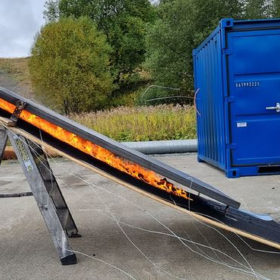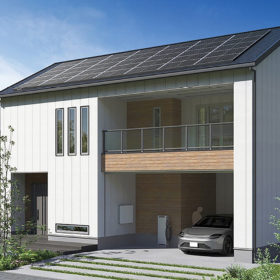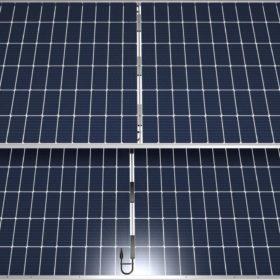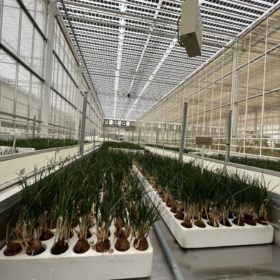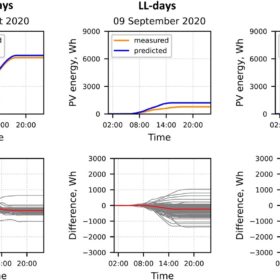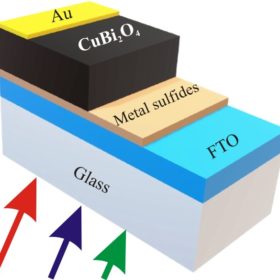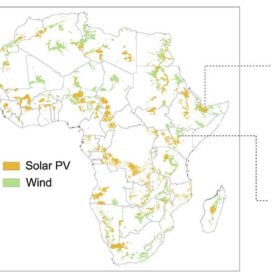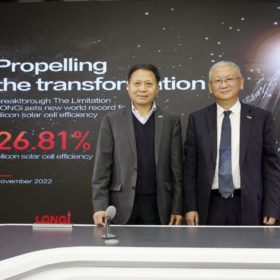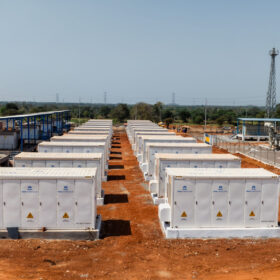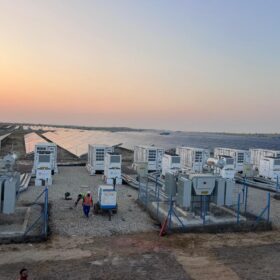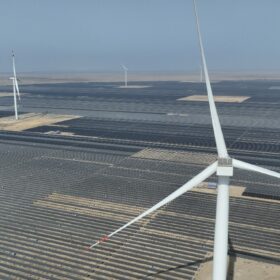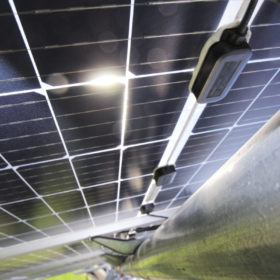PV system fires potentially exacerbated by gap between solar panels, rooftops
Norwegian researchers have published a new study showing that the space between solar panels and rooftop surfaces might play a critical role in contributing to PV system fires.
Panasonic unveils vehicle-to-home system for PV-powered homes
Panasonic claims that its new vehicle-to-home system can increase the self-consumption rate of residential solar and storage capacity to 90%.
Hevel Solar unveils 450 W heterojunction solar panel with M6 cells
Russia’s Hevel Solar said its new modules are based on 166 mm x 166 mm half-cut cells. They reportedly have a bifaciality factor of 90% and a temperature coefficient of -0.26% per degree Celsius.
PV shade screens for greenhouses, agrivoltaics
A Saudi Arabian startup has developed a modular solar panel for agrivoltaic applications. It is specifically designed for locations with high solar radiation levels and protects plants and crops from excess sunlight.
How variable is rooftop solar power?
A research group has developed a new methodology that shows PV systems located in the same area could have similar distributions of power ramps. Their three-step method could be used for the dimensioning of rooftop arrays and the scheduling of daily operations.
Scientists make first attempt to design solar cells based on kusachite
Indian scientists have designed a thin-film solar cell that uses a mineral made of binary copper(II) and bismuth(III) oxide. They identified a cell design with a tin sulfide buffer layer that offers efficiencies close to 27.7%.
Sunova Solar releases 575 W n-type PV panel with 22.2% efficiency
Sunova Solar is offering five versions of its new solar panels, with power outputs from 555 W to 575 W and efficiencies ranging from 21.4% to 22.2%. They have a temperature coefficient of -0.31% per degree Celsius.
IRENA releases all-Africa dataset of locations for solar, wind
The International Renewable Energy Agency (IRENA) has published a dataset with 10,905 sites for PV deployment across Africa, with an estimated total capacity of 4.9 TW.
Longi claims world’s highest efficiency for silicon solar cells
Longi said it has achieved a 26.81% efficiency rating for an unspecified heterojunction solar cell, as confirmed by Germany’s Institute for Solar Energy Research Hamelin (ISFH).
Novel soiling loss measurement system for PV installations
An international research group has developed new technology to measure soiling losses in PV installations, by using a simple pocket light. They said the new system offers similar performance to their reference devices.

